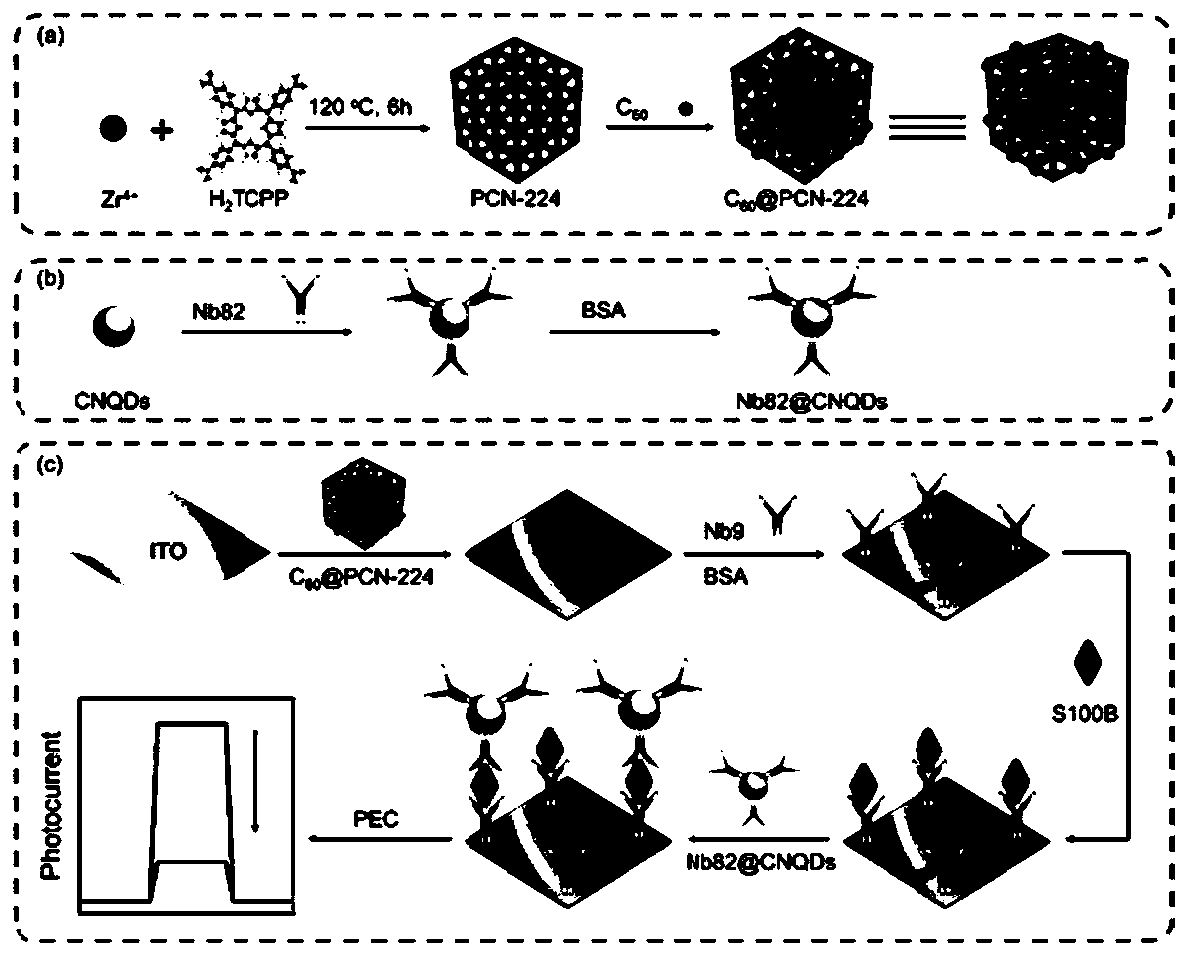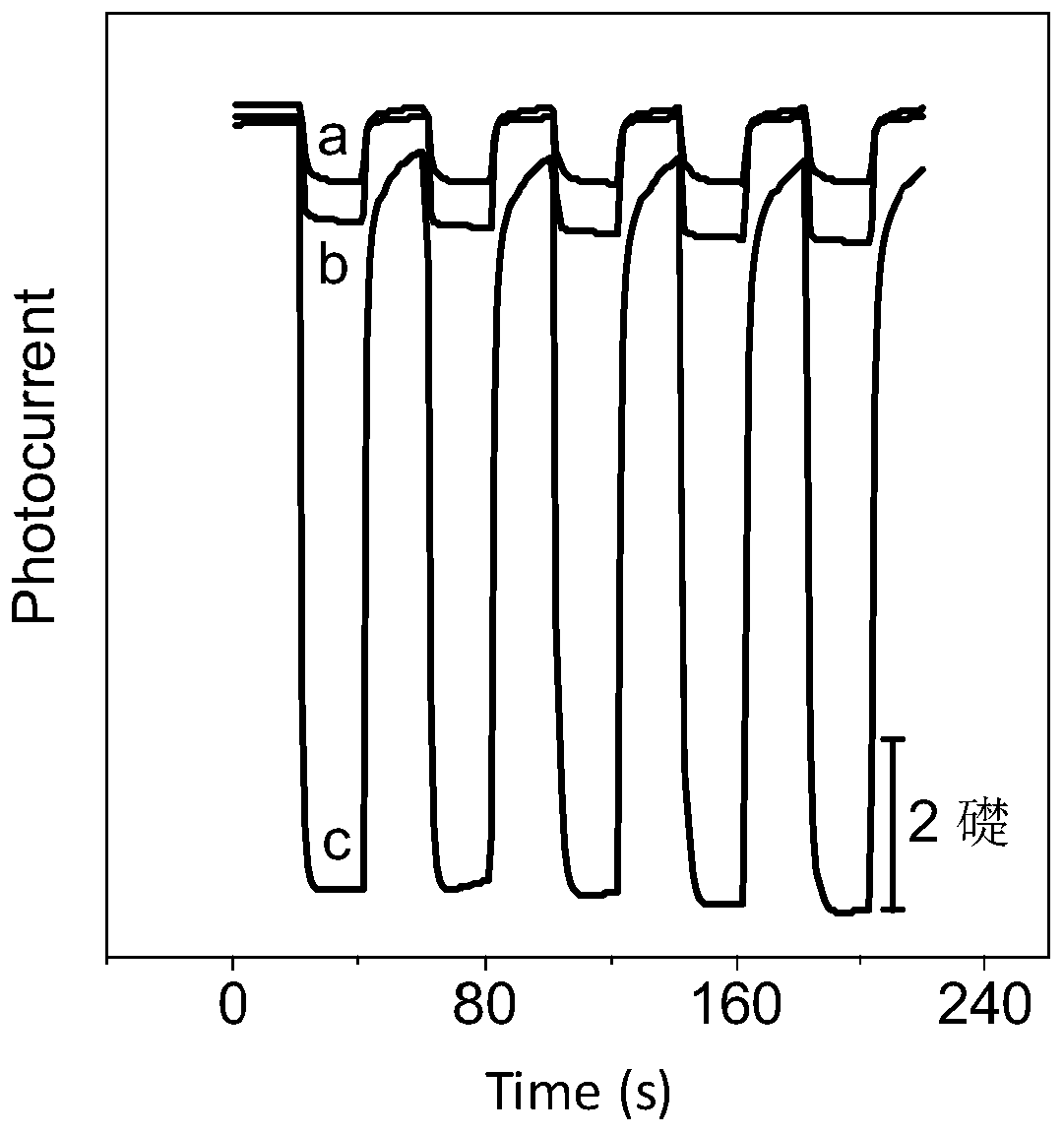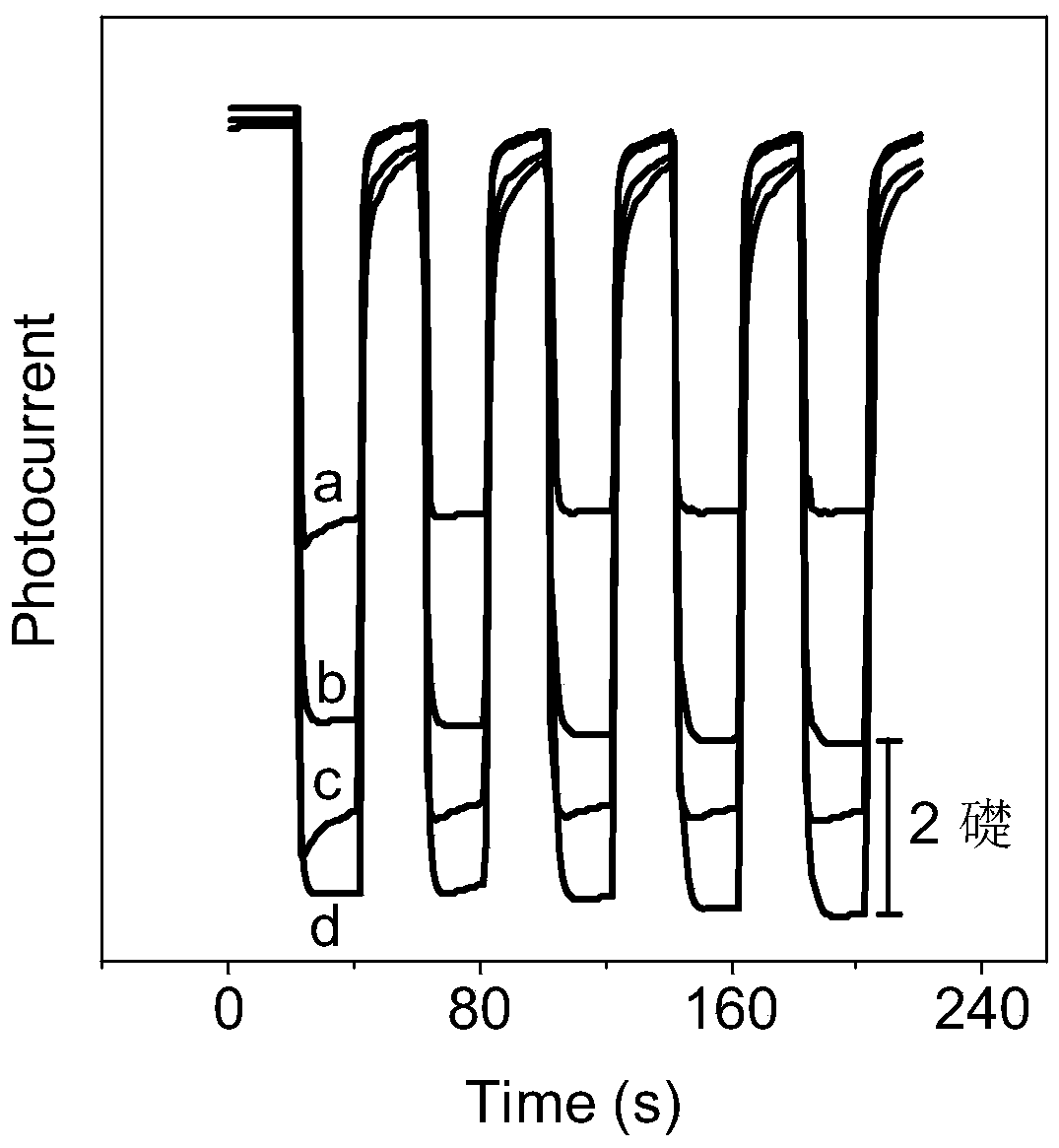Photoelectrochemical immunosensor for detecting S100B and preparation method thereof, and application of photoelectrochemical immunosensor
An immunosensor and photoelectrochemical technology, applied in the field of biomedical detection, to achieve good stability and sensitivity, easy operation and rapid response
- Summary
- Abstract
- Description
- Claims
- Application Information
AI Technical Summary
Problems solved by technology
Method used
Image
Examples
Embodiment 1
[0040] Photoactive material C 60 Preparation of @PCN-224
[0041] (1) Synthesis of PCN-224: Accurately weigh 30mg ZrOCl with an analytical balance 4 ,20mg H 2 TCPP, 1080mg of benzoic acid was dissolved in 3.2mL of DMF, and the above solution was heated and reacted in a round bottom flask at 120°C for 6h, and finally washed with DMF and ethanol for several times, and dried.
[0042] (2)C 60 Synthesis of @PCN-224 complex: Weigh 1mg PCN-224, prepare 1mg / mL dispersion, solvent is ethanol; weigh 1mg C 60 , prepare a 1mg / mL dispersion, and the solvent is DMF. Measure PCN-224 dispersion liquid, C 60 Dispersion solution 1mL each, mixed ultrasonic 1h, stirred for 12h, can be prepared C 60 @PCN-224 Complex, C 60 @PCN-224 was dispersed in ethanol at a concentration of 1mg / mL and stored for later use.
Embodiment 2
[0044] Preparation of Nb82@CNQDs
[0045] (1) CNQDs were synthesized according to Hot-Tailoring of Carbon Nitride Dots with Red-Shifted Photoluminescence for Visual Double Text Encrypt and Bioimaging (Chem. Eur. J. 2019, 25, 10188-10196).
[0046] (2) Add 10 μL of 50% glutaraldehyde aqueous solution to 900 μL CNQDs aqueous solution (1 mg / mL), and sonicate for 2 hours in the dark. Then, 100 μL of Nb82 (100 μg / mL) in PBS (0.01 M, pH=7.4) was added and incubated at 4° C. for 12 h, so that Nb82 and CNQDs fully reacted. Finally, 10 μL of 1% BSA 0.01M PBS (pH=7.4) solution was added to the above solution, blocked for 30 min at 37 °C, and the prepared Nb82@CNQDs were stored in a 4 °C refrigerator for later use.
Embodiment 3
[0048] Preparation method of photoelectric immunosensor
[0049] according to figure 1 The steps shown assemble the sensor:
[0050] (1) The signal layer is fixed
[0051] To 0.25cm 2 Add 10 μL 1mg / mL C dropwise on the ITO 60 @ PCN-224 dispersion (embodiment 1), stay overnight at room temperature, wash with deionized water after drying, and dry to obtain C 60 @PCN-224 / ITO substrate electrode.
[0052] (2) Anchor recognition molecules
[0053] Add dropwise 10 μL of the mixed solution of EDC (100 mM) and NHS (50 mM) to the C obtained in step (1). 60 @PCN-224 / ITO substrate electrode, placed at room temperature for 1-2h to activate C 60 For the carboxyl groups on the surface of @PCN-224, wash with PBS, add 10 μL of 10 μg / mL Nb9 dropwise to the above electrode, and incubate at 4 °C for 12 hours to make it fully anchored and loaded on the surface of the electrode material, and then wash it with 0.01M PBS (pH=7.4) The solution washes away unbound Nb9.
[0054] (3) Non-specif...
PUM
 Login to View More
Login to View More Abstract
Description
Claims
Application Information
 Login to View More
Login to View More - R&D
- Intellectual Property
- Life Sciences
- Materials
- Tech Scout
- Unparalleled Data Quality
- Higher Quality Content
- 60% Fewer Hallucinations
Browse by: Latest US Patents, China's latest patents, Technical Efficacy Thesaurus, Application Domain, Technology Topic, Popular Technical Reports.
© 2025 PatSnap. All rights reserved.Legal|Privacy policy|Modern Slavery Act Transparency Statement|Sitemap|About US| Contact US: help@patsnap.com



